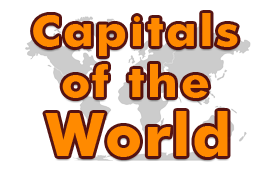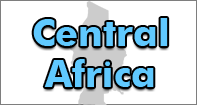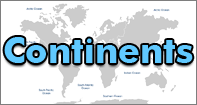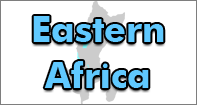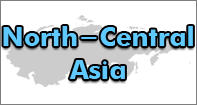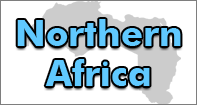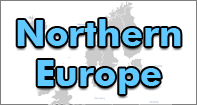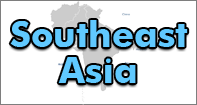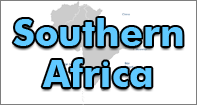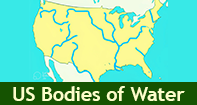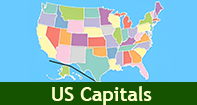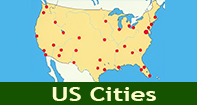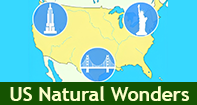Login as parent/teacher to assign this.
Geography Games
Online Geography Games with World and U.S. Geography
Turtle Diary includes a multitude of World Geography games and U.S. State Geography games to expand your learners’ world view. In studying each, they will dramatically improve their geographic skills.
The games are divided into three different modes: learn, puzzle, and quiz modes. This is a three-step scaffolding process by which the child learns the content first. They get to practice it in a fun way first so that they don’t get stressed about the content.
To ensure comprehension, they will then be quizzed on the material. Each provides vital skills for mastering geographic knowledge and reinforces their map skills.
What are the different game modes?
LEARN MODE
In Learn mode, the child will guide the process, learning about states and capitals or countries of the world via continent. Hearing the name of the country or state pronounced out loud helps them learn to link the visual and auditory, especially for some of the more complicated names. Students will also be able to see the location of the state or country in the framework of a continent or country.
This is invaluable for beginning to build a framework for geography. Students will move beyond the country in which they live and into the world. They can see where other places are located in reference to where they live, which expands their world view. Lots of additional facts are also available in this mode if the child chooses to access it, such as languages spoken, currency, flags, and key features.
PUZZLE MODE
In Puzzle Mode, kids get to practice what they’ve learned by identifying the correct locations of the states and countries that appear. It’s a challenge, but practicing in the Learn mode can help them to prepare. Beginning with their country or state of origin and expanding the knowledge outward is a great way to begin learning U.S. and then world geography. They can also choose to pick up additional facts along the way in the more section.
QUIZ MODE
Quiz mode is just like it sounds where students will be tested on their knowledge. They are faced with knowing the names and locations of states and countries, or they have to locate it by capital. It’s tricky and has a timer that runs, teaching the kids to work on their processing speed and quick recall. Trying to improve on the amount they scored correctly can be an attainable goal.
What will my student learn in each geography game?
Students will learn about the capitals around the world in all of the 7 continents. They will drag and drop a pin to the correct location of the capital within each country on a map.
Students will learn about the location and basic facts of the seven continents first. Then they will dive into specific regions within each of the other games.
AFRICA
Central Africa
Students will learn about the different Central African countries and their capitals, as well as interesting facts about each. Countries studied will include Angola, Cameroon, Central African Republic, Chad, Congo, Democratic Republic of Congo, Republic of the Congo, Equatorial Guinea, Gabon, and São Tome and Principé.
Eastern Africa
Students will study the different Eastern Africa countries and their capitals, learning interesting facts about each. Countries presented will include Burundi, Comoros, Djibouti, Ethiopia, Eritrea, Kenya, Madagascar, Malawi, Mauritius, Mozambique, Réunion, Rwanda, Seychelles, Somalia, Somaliland, Tanzania, Uganda, Zambia, and Zimbabwe.
Northern Africa
In Northern Africa, students will learn to identify the 19 countries and their capitals while also learning interesting facts about each. They will discover Algeria, Egypt, Libya, Morocco, Tunisia, Ceuta, Melilla, Western Sahara, and Sahrawi Arab Democratic Republic.
Southern Africa
Southern Africa brings more interesting facts, with several more countries and capitals to learn, including Botswana, Eswatini (Swaziland), Lesotho, Namibia, and South Africa.
Students will learn about the different Central African countries and their capitals, as well as interesting facts about each. Countries studied will include Angola, Cameroon, Central African Republic, Chad, Congo, Democratic Republic of Congo, Republic of the Congo, Equatorial Guinea, Gabon, and São Tome and Principé.
Eastern Africa
Students will study the different Eastern Africa countries and their capitals, learning interesting facts about each. Countries presented will include Burundi, Comoros, Djibouti, Ethiopia, Eritrea, Kenya, Madagascar, Malawi, Mauritius, Mozambique, Réunion, Rwanda, Seychelles, Somalia, Somaliland, Tanzania, Uganda, Zambia, and Zimbabwe.
Northern Africa
In Northern Africa, students will learn to identify the 19 countries and their capitals while also learning interesting facts about each. They will discover Algeria, Egypt, Libya, Morocco, Tunisia, Ceuta, Melilla, Western Sahara, and Sahrawi Arab Democratic Republic.
Southern Africa
Southern Africa brings more interesting facts, with several more countries and capitals to learn, including Botswana, Eswatini (Swaziland), Lesotho, Namibia, and South Africa.
ASIA
Eastern Asia
Students will learn the states of modern East Asia and their capitals, as well as interesting information about each. Countries include China, Japan, Mongolia, North Korea, South Korea, and Taiwan.
North-Central Asia
North-Central Asia is a more specific region where students will learn more countries and capitals, including Kazakhstan, Kyrgyzstan, Russia, Tajikistan, Turkmenistan, and Uzbekistan.
South Asia
South Asia consists of a variety of countries and their respective capitals, with rich information about each. The countries students will learn include Afghanistan, Bangladesh, Bhutan, India, Nepal, Pakistan, Sri Lanka, and the Maldives.
Southeast Asia
Southeast Asia presents students with a variety of countries on the mainland and in maritime Southeast Asia. Students will learn about the countries of Indochina, including Cambodia, Laos, Peninsular Malaysia, Myanmar, Thailand, and Vietnam. In addition, they will study those on the Malay Archipelago, including the Andaman and Nicobar Islands (India), Brunei, East Malaysia, East Timor, Indonesia, the Philippines, and Singapore.
West Asia
West Asia consists of countries and capitals with more interesting facts. Students will study the Middle East, the Eastern Mediterranean, and the Near East. The countries include Bahrain, Iran, Iraq, Israel, Jordan, Kuwait, Lebanon, Oman, Qatar, Palestine, Saudi Arabia, Syria, Turkey, UAE, and Yemen.
Students will learn the states of modern East Asia and their capitals, as well as interesting information about each. Countries include China, Japan, Mongolia, North Korea, South Korea, and Taiwan.
North-Central Asia
North-Central Asia is a more specific region where students will learn more countries and capitals, including Kazakhstan, Kyrgyzstan, Russia, Tajikistan, Turkmenistan, and Uzbekistan.
South Asia
South Asia consists of a variety of countries and their respective capitals, with rich information about each. The countries students will learn include Afghanistan, Bangladesh, Bhutan, India, Nepal, Pakistan, Sri Lanka, and the Maldives.
Southeast Asia
Southeast Asia presents students with a variety of countries on the mainland and in maritime Southeast Asia. Students will learn about the countries of Indochina, including Cambodia, Laos, Peninsular Malaysia, Myanmar, Thailand, and Vietnam. In addition, they will study those on the Malay Archipelago, including the Andaman and Nicobar Islands (India), Brunei, East Malaysia, East Timor, Indonesia, the Philippines, and Singapore.
West Asia
West Asia consists of countries and capitals with more interesting facts. Students will study the Middle East, the Eastern Mediterranean, and the Near East. The countries include Bahrain, Iran, Iraq, Israel, Jordan, Kuwait, Lebanon, Oman, Qatar, Palestine, Saudi Arabia, Syria, Turkey, UAE, and Yemen.
EUROPE
Eastern Europe
Countries and their capitals in Eastern Europe are many, including Belarus, Bulgaria, the Czech Republic, Hungary, Poland, Republic of Moldova, Romania, Russian Federation, Slovakia, Turkey, and Ukraine.
Northern Europe
Students will study the countries and capitals of Northern Europe, including Denmark, Estonia, Finland, Iceland, Ireland, Latvia, Lithuania, Norway, Sweden, and the United Kingdom.
Western Europe
Western European countries include Austria, Belgium, France, Germany, the Netherlands, and Switzerland.
Southern Europe
The Southern European countries students will learn include Albania, Bosnia & Herzegovina, Croatia, Italy, Kosovo, Macedonia, Montenegro, Portugal, Serbia, Slovenia, Spain, and Greece.
Countries and their capitals in Eastern Europe are many, including Belarus, Bulgaria, the Czech Republic, Hungary, Poland, Republic of Moldova, Romania, Russian Federation, Slovakia, Turkey, and Ukraine.
Northern Europe
Students will study the countries and capitals of Northern Europe, including Denmark, Estonia, Finland, Iceland, Ireland, Latvia, Lithuania, Norway, Sweden, and the United Kingdom.
Western Europe
Western European countries include Austria, Belgium, France, Germany, the Netherlands, and Switzerland.
Southern Europe
The Southern European countries students will learn include Albania, Bosnia & Herzegovina, Croatia, Italy, Kosovo, Macedonia, Montenegro, Portugal, Serbia, Slovenia, Spain, and Greece.
NORTH AMERICA
U.S. Capitals
Students will focus on learning the state capitals in correspondence with their knowledge of the 50 U.S. States.
Students will focus on learning the state capitals in correspondence with their knowledge of the 50 U.S. States.
Students will learn all countries in South America and their capitals, as well as interesting facts about each. These include Argentina, Aruba, Bolivia, Brazil, Caribbean Netherlands, Chile, Colombia, Curacao, Ecuador, Falkland Islands, French Guiana, Guyana, Paraguay, Peru, Suriname, Trinidad and Tobago, Uruguay, and Venezuela.
Central America
The strip of land joining North and South America consists of a series of countries and capitals that students will need to learn. It includes Belize, Costa Rica, Honduras, Guatemala, El Salvador, Nicaragua, and Panama.
Students will love learning about unique aspects of each of the countries while they commit their location and capitals to memory. They will even learn to recognize the flag for each country as they make their way through these fun geography games.
Central America
The strip of land joining North and South America consists of a series of countries and capitals that students will need to learn. It includes Belize, Costa Rica, Honduras, Guatemala, El Salvador, Nicaragua, and Panama.
Students will love learning about unique aspects of each of the countries while they commit their location and capitals to memory. They will even learn to recognize the flag for each country as they make their way through these fun geography games.
Our Educational Resources
Math Games
- Addition
- Area and Perimeter
- Decimals
- Division
- Fractions
- Shapes
- Geometry
- Multiplication
- Number
- Roman Numerals
- Statistics
- Subtraction
- Time
- Units of Measurement


